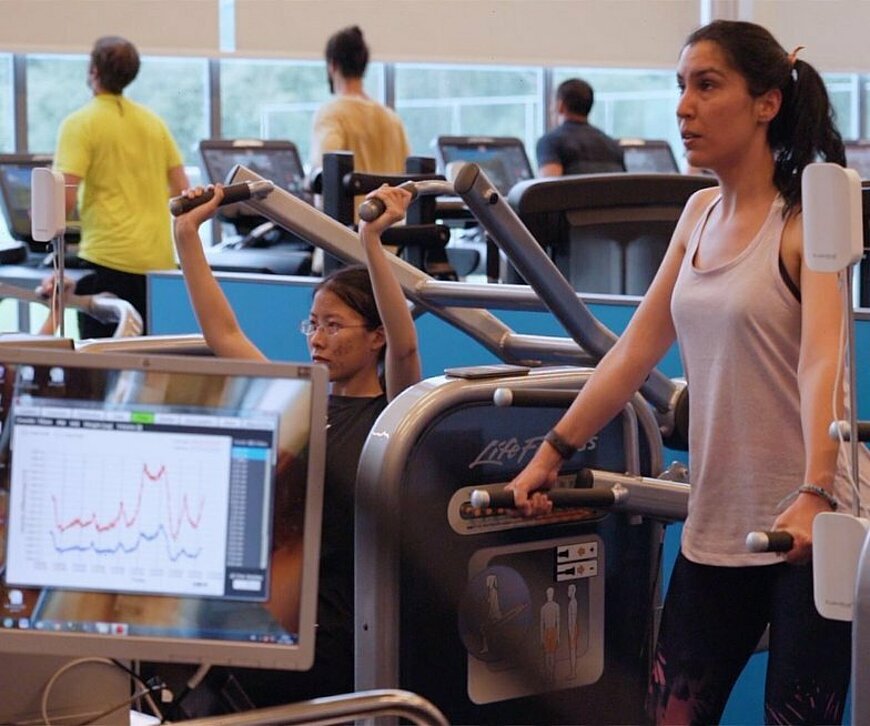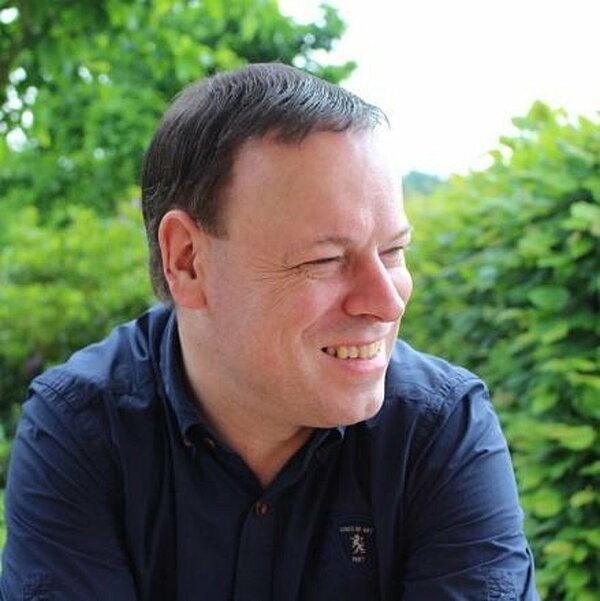How to make gyms safe in times of corona using ventilation and air purification

New research shows that current regulations for ventilation in sports facilities do not ensure low aerosol particle concentrations.
Meeting the ventilation standards of the Dutch Building Code is no guarantee that the air in buildings is sufficiently free of aerosol particles. Even in buildings that comply with this Code, the concentration of aerosol particles can increase significantly during intensive use, such as exercise. This is the main conclusion of experiments carried out by Eindhoven University of Technology (TU/e) in a gymnasium of the Eindhoven Student Sports Center. Lead researcher Bert Blocken concludes that a combination of ventilation and innovative air cleaning can be a good precaution for safe and responsible exercise, even during the corona pandemic. The study was published in the scientific journal Building and Environment.
Although the precise role of aerosols in the spread of COVID-19 is still the subject of scientific debate, it is clear that good ventilation is an important precaution that can help contain the corona pandemic. Especially in indoor sports facilities, where people tend to breathe in and out heavily and vigorously, clean air is of vital importance.
Air quality is closely related to the concentration of aerosol particles, the tiny saliva droplets that can remain suspended in air. Research by TU/e and others now shows that ventilation alone is usually not sufficient to remove these particles. In order to keep the concentration of aerosols in indoor sports facilities permanently low, additional air cleaning is needed.
Air cleaners that use plasma technology, combined with active carbon and electrostatic filters, prove to be very effective: together with the ventilation system they remove up to 80 to 90 percent of the aerosols from the air. Follow-up research will have to show whether this combination of air cleaning and ventilation produces the same results with other purification technologies and in other environments, such as nursing homes, schools, indoor (sports) stadiums, offices, restaurants, theaters, elevators, etc.

Aerosols
It is well known that people can transmit the coronavirus through larger droplets of fluid from the nose or mouth. It is the reason behind the social distancing rules that are currently in force in the Netherlands and many other countries: the droplets are so heavy that within a certain distance they usually fall to the ground and no longer pose a threat. Although there is no consensus yet among scientists that the smaller saliva droplets, called aerosol particles, also play a significant role in the spread of coronavirus, there is growing evidence that this is the case.
Aerosol particles are so small (smaller than a few tens of micrometers), that they remain suspended in the air, and can even accumulate, especially in enclosed spaces, such as a gym, where people congregate and exercise intensively. Ventilation is therefore key for air quality and to contain the potential risk of contamination, as witnessed by the public health recommendations for gyms and other sports facilities from health authorities throughout the world, including the Dutch Institute for Public Health (RIVM).
Professor Bert Blocken of TU/e and KU Leuven, one of the researchers behind the study and a leading expert in the field of air flows, calls this the precautionary principle: even if we are not yet 100 percent sure if and to what extent high aerosol concentrations lead to transmission of the coronavirus, to be on the safe side it is better to avoid them. Incidentally, since the introduction of the current Corona protocol in the Netherlands, there have been no known sources of COVID-19 infection within Dutch gyms. "But in the United States scientists recently reported an outbreak in a sports facility in Chicago, probably caused by aerosols", says Blocken.
Experiment
To see how this works in practice, Blocken and his colleagues conducted a number of experiments in a gym at the Student Sports Center Eindhoven. The study was sponsored by Sportinnovator, a publicly funded program for sports innovation and research. After first building simulations and a series of experiments with artificially generated aerosols, 35 test subjects gathered there on July 11 of last year for some intense exercises.
Using almost 150 sensors, the researchers monitored exactly how many saliva droplets ended up in the air, and how much ventilation can contribute to limiting the rise in their concentrations. They then looked at whether air purification could offer a solution. The researchers used two air cleaning units, which in addition to traditional electrostatic, fiberglass and carbon filters, also use plasma technology. This relatively inexpensive technology cleans the air almost as efficiently as the HEPA filters commonly used in hospitals and clean rooms.
The units draw air in through the bottom and blow out filtered air along the top at a height of 1.6 meter. This ensures that the air is filtered at walking height. And they did so very efficiently: together, the two cleaners (with a total capacity of 1234 m³ per hour) were about as effective as the ventilation system with a capacity that was 1.5 times higher. In just one filter cycle, they were able to remove 98 to 98.5 percent of all aerosols from the cleaned air.
The tested air cleaners have another major advantage: because no outside air is needed, it also does not have to be heated. This makes them very energy efficient: the two units together consume 210 W.
Optimistic
Blocken emphasizes that the plasma filters are not a replacement for ordinary ventilation. "This type of air cleaning mainly removes aerosol particles from the air, but not CO2. Ventilation therefore remains necessary for clean air."
"However, the cleaners are very efficient and flexible, and they make an expensive upgrade of existing ventilation systems unnecessary. What’s more, they offer a solution when you cannot ventilate as easily by opening windows and doors because of the cold." Blocken calls this good news for all indoor sports facilities and especially gyms, but also for public health. "Especially during a pandemic, it is important that people stay fit and healthy," he says.
The filters could possibly also be used in other areas where aerosol particles accumulate. Whether they would be just as effective there is still to be determined by further research. Blocken and his colleagues are currently doing follow-up research in the Johan Cruijff ArenA in Amsterdam, the Maaspoort in Den Bosch and the top sports locations CTO Papendal and CTO The Hague. They will also perform additional computer simulations (so-called CFD simulations) to provide further insights in aerosol behavior, ventilation and air cleaning.
The researchers have also developed a practical tool with which gyms and other locations can check whether their ventilation system sufficiently limits concentrations of aerosol particles, and to what extent additional air cleaning is required. The tool (a so-called nomogram) takes into account the volume and height of the room and the maximum number of people present, and can be used for all forms of ventilation and air cleaning.
Collaboration
This research was conducted in collaboration between TU/e, Sportinnovator and the company PlasmaMade. In addition, the city of Eindhoven, Isala Hospitals, Go2Sure, NOC*NSF, the Dutch Ministry of Defense, Ansys and the Avicenna Alliance for Predictive Medicine were involved in the research.
Blocken’s team at TU Eindhoven was awarded a Microsoft AI for Health grant to power the simulations his group will be running. This grant is under the auspices of the COVID-19 High Performance Computing Consortium, which brings together global technology leaders to provide access to high-performance computing resources in support of COVID-19 research. Blocken’s team will use these credits to simulate their CFD models with Ansys Cloud, the gateway to Azure compute power for Ansys technology.
Sportinnovator is the program for innovation and research of the Ministry of Health, Welfare and Sport. In addition to innovations for top-level and recreational sport, it also focuses on innovations that have an impact on public health and society. Sportinnovator is led by Topteam Sport and supported by ZonMw.
According to Martin Olde Weghuis, member of Topteam Sport, the research by Blocken is an excellent example of how science and business can work together to provide solutions to pressing problems in sport. "This is only possible because of the unique network that Sportinnovator has built in recent years. This allowed us to act quickly when needed."